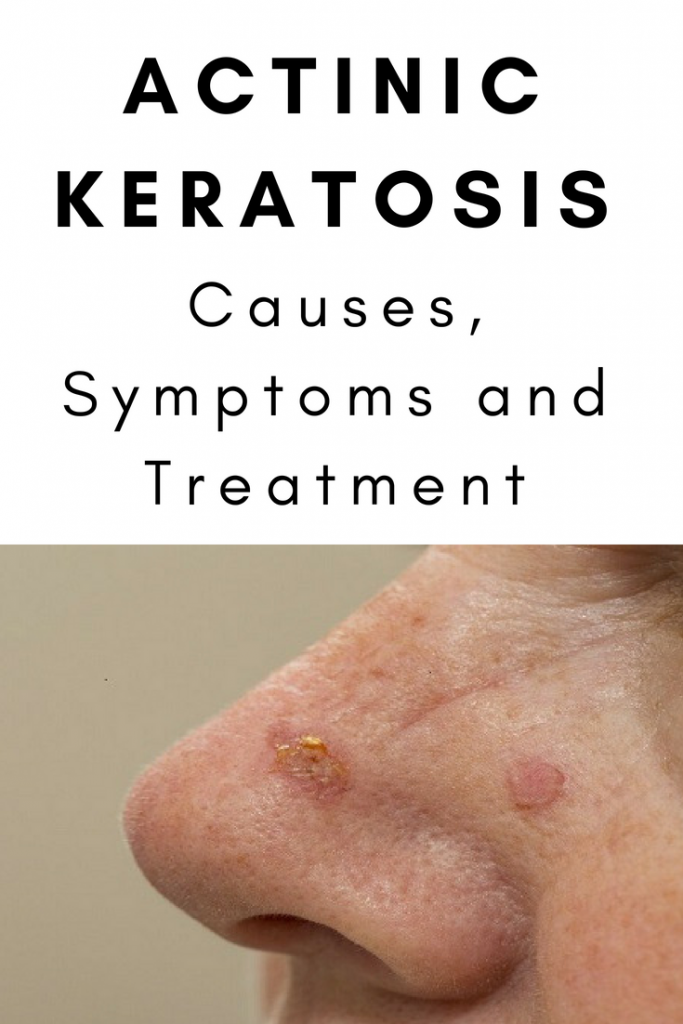Actinic keratosis develops slowly and progressively. It is important to attend to any signal in a timely manner to achieve timely and effective treatment.
Also known as solar keratosis, AK is a type of premalignant lesion that looks like a thick, rough patch on the skin. It often develops in areas that have been exposed to the sun for many years.
Its growth is slow and progressive and takes years to manifest itself forcefully. Because of this, they are usually detected more frequently in people over 40 years of age, or during the third age.
In addition, the more likely to develop one or more lesions of actinic keratosis are individuals with fair complexion, blond or red hair, and blue or green eyes. Also, the risk is raised by spending a lot of time outdoors or living in places with sunny weather.
About 20% of cases can progress to skin cancer (squamous cell carcinoma); however, if they receive timely treatment, most are successfully eliminated before developing it.
What are the causes of actinic keratosis?
Actinic keratosis is caused by the deterioration of the skin due to frequent exposure to UV rays from the sun or tanning booths. In fact, sun damage accumulates over the years, even when exposure to the sun was brief.
Causes of solar keratosis
The risk rises alarmingly among those who do not use sunscreen, or preventive measures to minimize the impact of the sun. In fact, even cloudy days are not safe, as up to 70% of the sun’s rays get through the clouds.
A reduced percentage of actinic keratosis may be related to prolonged exposure to X-rays or to various industrial chemical agents.
Risk factors
All people can develop actinic keratosis. However, there are some factors that increase the chances of suffering from it.
- Be over 40 years old
- Live in a sunny climate
- Having a history of severe tanning or sunburn
- Be blond or redhead
- Have freckles or spots
- If you have actinic keratosis or skin cancer family history
- Work or do outdoor activities
- Having had a kidney or other organ transplant
- If you have weak immune system due to chemotherapy, leukemia or autoimmune disease
Symptoms of actinic keratosis
Actinic keratosis is a scaly growth, in the form of a scab, which often appears in areas exposed to the sun, such as the face, ears, hands, forearms, shoulders or neck.
The first manifestations are so slight that they can be recognized more by touch than by sight. The sensation when touching them tends to be similar to that of passing the finger through a sandpaper.
Actinic keratosis
As the problem progresses, the signs and symptoms become more evident. Affected patients can identify:
- A thick, dry, rough skin patch that can measure less than an inch in diameter
- A hard surface similar to a wart
- Colors that can be red, pink or brown
- Itching and burning in the area
Complications
In fact, the lack of an appropriate treatment for actinic keratosis can lead to the formation of a squamous cell carcinoma. It is a type of cancer that you can treat if you discover it on time.
Diagnosis
To determine if an individual has actinic keratosis, the doctor does a thorough skin examination. If for any reason there is suspicion of cancer, you can suggest additional tests such as a skin biopsy.
Read also: The Biggest Malignant Melanoma Or Skin Cancer Risk Factor And Symptoms! BEWARE!
Treatment of actinic keratosis
Many cases of actinic keratosis disappear on their own; however, some return after a new solar exposure. For this reason, and considering that some can turn into cancer, most people remove them as a precaution.
Procedures and surgery
Burning or electrocautery
Curettage and electrodesiccation (scraping of the lesion and use of electricity to destroy any remaining cells)
Excision (removal of the tumor and sutures to join the skin again)
Cooling (cryotherapy, which freezes and destroys cells)
Photodynamic therapy (a laser treatment)
Medicines
The practitioner may suggest the use of some topical medications if there are too many patches for actinic keratosis, such as:
- Fluorouracil cream (Carac, Fluoroplex, Efudex)
- Cream of imiquimod (Aldara, Zyclara)
- Ingenol mebutato gel (Picato)
- Diclofenac gel (Voltaren, Solaraze)
Note: the use of these products can produce side effects such as redness, peeling and burning.
Don’t forget to SHARE the info about actinic keratosis with your friends and family on your social networks!

